Aside from cured varieties like pancetta and prosciutto, we don’t eat a lot of pork around here. I’m not sure why. I think it’s because I often find the meat can be dense and dry. Pork tenderloin, the filet mignon of the pig, is quite another story. It’s a succulent cut that’s quick to prepare and pairs well with great flavors, especially fruit. Continuing with my theme of fall-flavor-friendly plates, this amazing autumn dinner absolutely fits the bill. It comes together in an hour, but tastes like a deliciously complex meal. Tender medallions of pork are lovingly napped with a rich port sauce studded with figs; rosemary roasted wedges of maple drizzled acorn squash make a mouth-watering accompaniment. Ding-dong, dinner’s served!
Pork Tenderloin Roast with Fig & Port Sauce
and Rosemary Maple Acorn Squash
Begin cooking the dinner by preparing the squash first–the pork tenderloin will come together in the time it takes to roast the wedges. Acorn squash is well-suited for this dish because, while its flesh is tender and creamy, it isn’t as sweet as other squash varieties. Preheat the oven to 400 degrees. Using a sharp knife, cut the squash in half from stem to root.
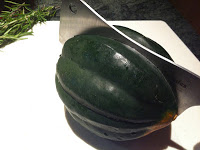
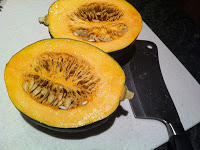
Scoop out the seeds from the middle with a large spoon. Cut the squash halves into wedges.
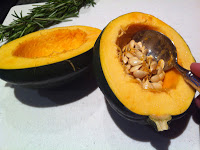
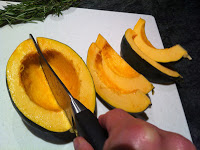
Place wedges on a baking sheet and roast in oven for 20 minutes.
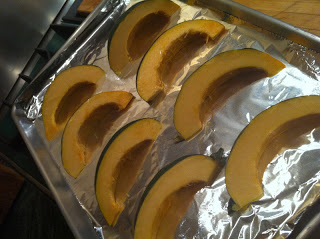
Remove the squash wedges from the oven. Smear the squash all over with softened butter that’s been mixed with minced rosemary, kosher salt and freshly ground black pepper.
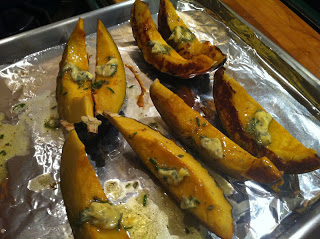
Lightly drizzle the squash with maple syrup. Place the pan back in the oven and continue roasting for 20 to 30 minutes until tender.
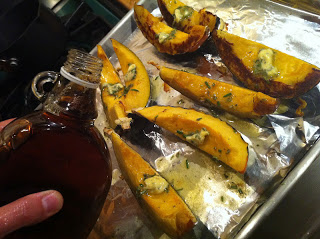
If you’re intimidated by sauces, don’t be–the port sauce for the pork, which adds lots of complexity to this dish, comes together easily when you follow step by step. Begin by making a port syrup. In a small saucepan, combine the ruby port, sugar, a long strip of orange peel, and a fresh rosemary sprig.

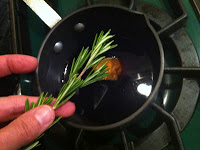
Bring to a boil, then adjust the heat to simmer rapidly until reduced by half, about 5 minutes. Remove the orange peel and rosemary and set the syrup aside.
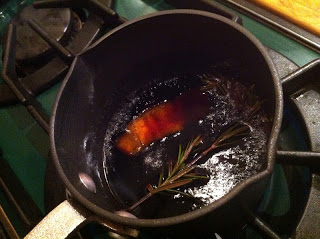
In a large ovenproof skillet, heat a tablespoon of olive oil over a medium flame. Season the pork tenderloin all over with kosher salt and freshly ground black pepper and place in the pan to brown, about 3 to 4 minutes on each side.
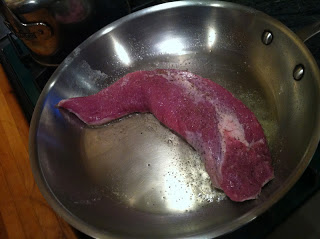
Put the skillet into the oven and roast pork for 15 to 20 minutes, until an instant read thermometer reads 140 degrees.
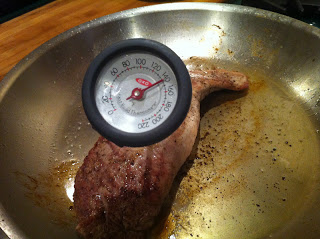
Use tongs to move the pork tenderloin to a cutting board to rest. Tent with aluminum foil. Don’t throw away all those lovely bits in the pan–they will be the foundation of your sauce. Place the skillet on a burner over medium heat. Melt a teaspoon of unsalted butter and add minced shallots. Cook until translucent.
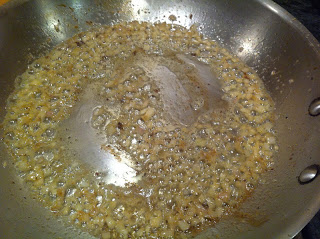
Pour port syrup into pan, add chicken stock and bring to a boil over medium heat, scraping up any bits from the bottom of the pan.
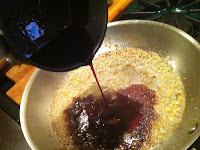
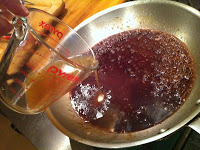
Add halved figs, cut side down, to the skillet and continue to boil until sauce is reduced to a thick, syrupy consistency and figs are tender. Finish with another teaspoon of butter. Taste and adjust seasoning.
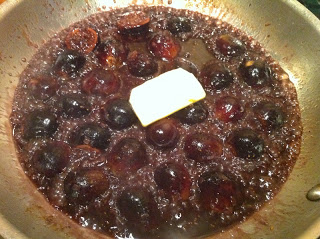
Place the tenderloin briefly back into the pan to warm and coat with the sauce.
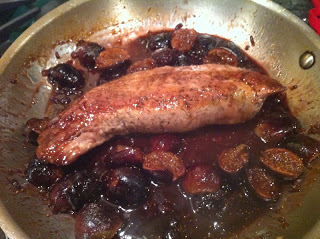
On a cutting board, slice the tenderloin fillet into medallions.
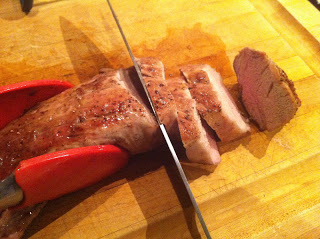
Plate the pork slices and top generously with the figs and sauce. Add squash wedges to the dish, and drizzle with pan juices. A glass of Pinot Noir complements this dish perfectly–cheers!
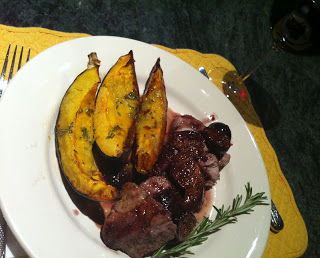
Serves 2, but can be doubled for 4:
Rosemary Maple Acorn Squash:
1 medium acorn squash
2 tablespoons softened unsalted butter
2 teaspoons minced rosemary
kosher salt and freshly ground black pepper
1 or 2 tablespoons maple syrup
Port Syrup:
1/2 cup ruby port
2 tablespoons sugar
1 strip of orange peel
1 sprig fresh rosemary
Pork Tenderloin with Figs:
1 tablespoon olive oil
1 pound pork tenderloin
kosher salt and freshly ground black pepper
2 teaspoons unsalted butter, divided
1 shallot minced, about 2 tablespoons
1/2 cup chicken stock
1 pint ripe figs, preferably mission

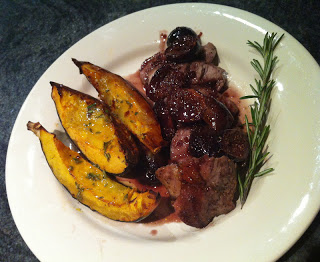
This dish welcomes the cooler evenings, changing foilage and dinning near a woodburning fireplace with gusto.
Thank you
Thank you!